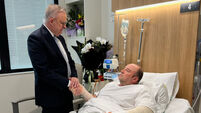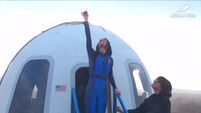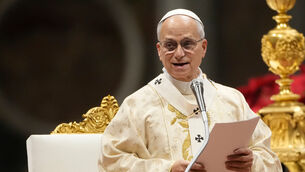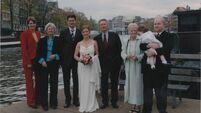Surgeons separating twins finish dangerous step
Surgeons performing a groundbreaking marathon operation to separate Iranian twin sisters joined at the head today completed one of the most dangerous steps.
They successfully re-routed a shared vein as thick as a finger that helped blood flow through the twin’s brains on the second day of a procedure that could last five days.
A new vein was attached and the international team of five neurosurgeons began separating 29-year-old Ladan and Laleh Bijani’s brains.
“Separation surgery began at 5pm (10pm Irish time),” said an official at Raffles Hospital in Singapore.
Tackling the shared vein was considered the biggest obstacle for the surgeons: Other than sharing the vein, the women’s brains are not joined – although they touch inside their skulls. Their bodies are otherwise distinct.
German doctors told the twins in 1996 that the shared vein, which drains blood from their brains, made surgery too dangerous.
“There may still be some difficulties encountered, but up until now we are quite satisfied with the progress of the whole surgery,” hospital spokesman Dr Prem Kumar said.
“Up until now, the twins have taken to the procedure quite well. They are stable, the anaesthesia is working quite well, so we are cautiously optimistic.”
The operation could kill one or both of the sisters, but after a lifetime of compromising on everything, the sisters said they would rather face those dangers than continue living joined to each other.
Before dawn, surgeons began stitching a vein taken from Ladan’s thigh to one of the twin’s brains to compensate for the removal of the shared vein.
Kumar would not say who received the original, finger-thick shared vein.
Classical music played softly as surgeons worked simultaneously in tight spaces in front of and behind the twins, who are sitting in a custom-built brace connected to an array of lines feeding them intravenously and monitoring their vital signs, Kumar said.
“Nothing is going on at a hurried pace,” Kumar said. ”Everything is quite calm and measured. There is lots of discussion.”
The twins spent months training at a gym to build up strength for the surgery and Kumar said they could be kept asleep for four days if necessary.
Dr Benjamin Carson of Maryland, who is one of the neurosurgeons taking part, has successfully separated three sets of craniopagus twins – siblings born joined at the head.
However, this is the first time surgeons have tried to separate adult craniopagus twins. The surgery has only been performed successfully since 1952 on infants, whose brains can more easily adapt and recover.
“If God wants us to live the rest of our lives as two separate, independent individuals, we will,” Ladan Bijani said before the operation.
The Bijani sisters were born in Firouzabad in southern Iran in 1974. President Mohammad Khatami said “the prayers of the Iranian nation” were with the twins.
An international team of 28 doctors and about 100 medical assistants were enlisted for the surgery.
The €254,000 cost of the operation is being underwritten by Raffles Hospital, and the doctors’ fees are being waived.














